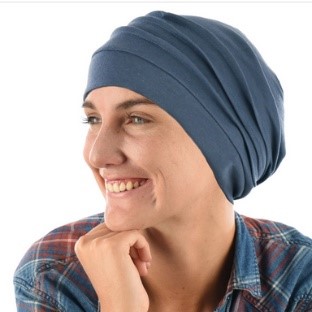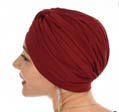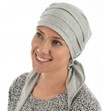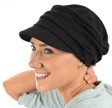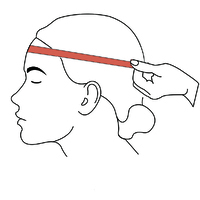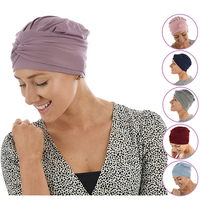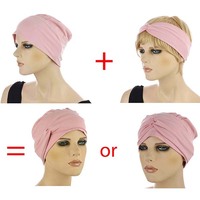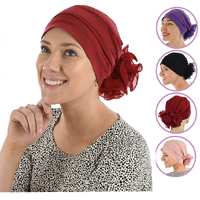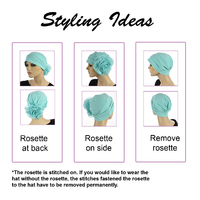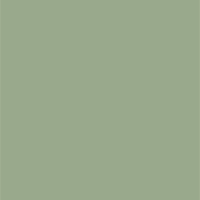General Guide on Head Covers for Hair Loss
Jas Fashion
1.Hair Loss Statistics in Australia
According to myDr.com.au, over 500,000 Australians are affected by alopecia areata. According to a study published by NIH, alopecia areata (hair loss due to autoimmune disorder) affects nearly 2% of the general global population at some point in their lifetime.
Based on Australian Institute of Health and Welfare statistics, 135 Australians will be diagnosed with cancer daily. This means that more than 150000 Australians will be diagnosed with cancer annually. More than 1 million people in Australia are either currently living with cancer or have lived with cancer.
Chemotherapy is one of the most common cancer treatment methods, with hair loss being the most visible side effect.
According to a journal article published online in The Oncologist in 2018, most patients reported hair problems after completion of chemotherapy. The following table shows that most patients will go through hair loss issues.
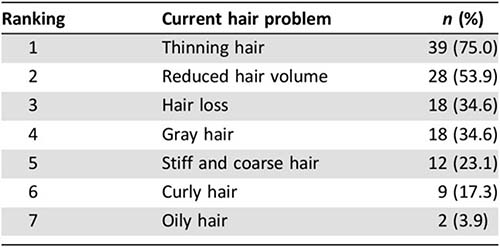 |
Based on data collected from Jas Fashion customers, hair loss can occur somewhere between 1 to 4 weeks after starting chemo treatment. It is about a one-year cycle for the hair to grow back, depending on the treatment's causes. We hope this article can provide some practical advice to hair loss patients.
2. Common Styles of Hair Loss Head Covers
Losing hair, regardless of medical reasons, sickness, or aesthetic reasons, can be a huge blow to your confidence and lead to insecurities. Statistically, this impacts more women than men. So, what are the best ways for women to look and feel good after losing hair?
Many women inevitably turn to wigs. However, while wearing wigs may camouflage your hair loss instantly by coving your bald head with hair, they are not sustainable in the long run. Therefore, most women eventually will have to find a more comfortable alternative – headcovers. Please go to our Wigs vs. Headcovers After Hair Loss Comparison Table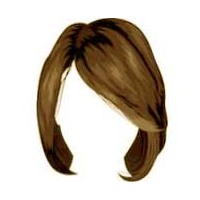 Click Here.
Click Here.
We hope this post can help you in finding the right head covers.
What are the most common Styles of Hair Loss Head Covers?
There are many styles to choose from, depending on the coverage you are seeking, the weather, and of course, your style. The most popular headcover types are:
- Beanies
- Turbans
- Head Scarves
- Fashion Hats
- Hats with attached hair extension
Styles of Hair Loss Headcovers and Benefits Table
Summary: If styles of chemo headwear are for looks and confidence, comfort is the key to keeping them on.
So how do you find the headcover that is just right for you? What to look for when shopping for a headcover?
3. What to look for when shopping for a headcover?
Based on Jas Fashion customer surveys and thousands of feedback received, the following factors are essential in choosing chemo headwear:
- A. The local climate/weather
- B. Comfort
- C. The ease of use and care
- D. Coverage and volume
- E. Your personal aesthetic
A. The local weather
Getting covered after hair loss is important for two reasons. It not only helps restore the wearer's confidence, but it also protects their scalp from weather elements.
So, you may have to work out how hot or cold it will be in the next six to twelve months.
During cooler seasons, when temperatures drop below 15 °C, even people with a full head of hair may need to cover their heads. In winter or cooler seasons, a double-layered cotton or bamboo hat or a knit woollen beanie over a liner might be a life saver if you have lost your hair.
In the same vein, you might find anything on your head unbearable during summertime. So a hat's breathability and moisture-wicking abilities become very important factors. Sometimes you may find a single-layered headcover made of lightweight bamboo more comfortable and better suited to the Australian climate due to its natural anti-bacterial properties.
If you live in the Northern QLD region, you may have to find something light and breathable for the hot and humid summertime; and if you live in Tasmania, you might have to consider a snuggly wool hat to deal with the chill.
In Australia, on sunny summer days, for outdoor activities, it might be wiser to wear brimmed hats as they protect you from the sun and cover your bald scalp from harmful UV rays.
B. Comfort
You cannot emphasize COMFORT enough when looking for headcovers for hair loss. You will likely cover your head for long hours during the day and nighttime. No matter how good it looks, an uncomfortable headcover can only put more stress on you. Therefore, comfort is key to long-wearing periods.
So what are the factors that affect the comfort of chemo headwear after hair loss?
- The fit
- Breathability
- The softness of the fabrics
- The smoothness of the inner lining
Sizing and Fitting:Measure your head circumference when selecting your headwear and preparing for your oncoming hair loss. Click here to view Jas Fashion Chemo Headwear Size Guide. Click here to view Jas Fashion General Head and Hat Size Guide. Make sure the headcover is stretchable or comes in multiple sizes. Traditionally, a comfortable headcover should be 1cm bigger than your head circumference. Click here to view Tips on Finding Headcovers of the Perfect Fit.
The breathability of a Chemo HeadcoverLook for headwear constructed of moisture-wicking and breathable materials, such as bamboo viscose, cotton, rayon, etc. Please go to our Headcover Fabric Comparison page for more information. The softness of the fabricsSoftness is an important factor. The interior of a chemo hat should be soft and gentle to the skin. Unfortunately, this is a very hard feature to decipher when doing your online shopping. The good news is most specialized chemo headcover shops will evaluate you. Remember to read product descriptions and look for feedback from other verified buyers and product reviews. Interior Finish of a Chemo HeadcoverLastly, a comfortable hair loss headcover should not irritate sensitive scalps. Ensure you review the product images for details, especially the interior finish. Ideally, the harsh seams of a hat are concealed, especially around the crown areas, to reduce scalp irritation due to friction, sweat accumulation, and pressure. Suppose you are buying a fashion hat from your local fashion store. The exterior of a fashion hat may be constructed of fabrics of conventional fibers and woven patterns, but the interior has to be soft to the touch. Make sure that inside of the hats is sensory-friendly or are fully lined, or you can find a suitable hat liner to wear under the hat. |
C. The Ease of Use and Care of the Product
Please consider your lifestyle when deciding on the styles of chemo headwear. Do you have enough time, or are you willing to spend time getting dressed up each day? Will you be able to raise your arms to tie a scarf? Will you be well enough to look after your hats?
Some hats are not packable; therefore, storage could be an issue. Some hats require handwashing, while others require ironing to make them look good.
The following four head cover examples have different difficulty levels in putting them on.
Ease of Use Comparison of Some of Jas Fashion Headcovers
| Very Easy | Easy | Medium | Hard |
|
Style #1: Ruched Cotton Turban Beanie Hailey No tying is required. |
Style #2: Bamboo Pre-tied Pleated Scarf Josie Slip-on style |
Style #3: Turban with Removable Seamless Band – Shirley Arm raising and adjustment required |
Style #4: Floral Head Scarf with Headband Gracie Tying is required by following instructions |
 |
|
|
 |
*Note: Style #1 Turban may look similar to Style #3 Turban, and Style #2 headscarf may look similar to Style #4, but they have different difficulty levels. This may not be a big issue for people with good mobility with their arms, but for women with breast cancer operations, the ease of use could be a considerable factor.
D. Coverage and Volume of a Chemo Headcover
Another frequent question we receive from customers is, "Can I just wear a hat from a local store?" The answer is: Yes, you can if your local fashion store happens to stock headwear that is soft, breathable, and, MOST IMPORTANTLY, provides full head coverage and disguises your hair loss nicely.
When shopping for a hair loss headcover, make sure the hat is deep enough to cover your hairlines at the back and front of the head. Turbans, beanies, and scarves are the three most popular headcovers for hair loss, as they naturally provide full head coverage with an effortless style
Another factor to consider is whether a headcover can add to the volume of your head. With hair loss or thinning hair, the volume of your head decreases significantly. A good chemo headcover will provide full head coverage and a beautiful head shape with volume.
So look for a headcover with volume-raising features such as pleats, ruches, and layering effects. Floral patterns, embellishments, and sashes or other accessories are great for redirecting visual attention.
Please go to our Buying Guide Blog Page for more tips on increasing your head volume after losing your hair.
Examples of Headcovers with Full Head coverage with Volume Raising Features
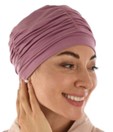 |
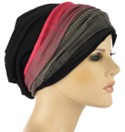 |
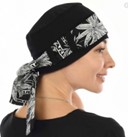 |
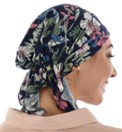 |
|
A turban featuring pleats |
A Beanie Overlayed with a Seamless Band |
A Single Layered Turban Hat with Sash Draping at Back |
Pre-tied Scarf with Floral Pattern |
E. Your Style Preference, Lifestyle, and Budget!
While illness is out of your control, make your headcovers your choice!!! Take control of your looks by embracing a good head cover that suits your personality, taste, skin complexion, face shape, wardrobe, budget, and lifestyle!
You are more likely to feel more confident and in your element, if you wear something that matches your aesthetics and conforms to your taste.
Let your choices of headcovers make a bold statement.
|
The Takeaway Living with hair loss may be an overwhelming experience for some, so take it one step at a time. Switching to headcovers need not be a heftily expensive process. At Jas Fashion, you will be spoiled for affordability and choices in styles, prints, fabrics, and designs. We strive to make your hair loss covers affordable, beautiful, and comfortable. Please feel free to contact us at Support@JasFashion.com.au, and don't forget to comment on our posts! |
References:
https://www.ncbi.nlm.nih.gov/pmc/articles/PMC5573125/
Healthline.com (https://www.healthline.com/health/alopecia-areata)
Australia Alopecia Areata Foundation: ( https://aaaf.org.au/ )
https://www.aihw.gov.au/reports/cancer/cancer-in-australia-2021/summary
Oxford Academic Journal The Oncologist (https://academic.oup.com/oncolo/article/24/3/414/6439141)
Related topics:
Wigs vs. Headcovers Comparison Table for Hair Loss Coverage
Jas Fashion Chemo Headwear Size Guide
Jas Fashion General Head and Hat Size Guide
Finding Headcovers of the Perfect Fit
Chemo Headcover Must-haves and Styling Tips
How to Deal with Hair Loss After COVID
Which Fabric is Suitable for Hair Loss Headcovers? (coming soon)
How to Increase Your Head Volume After Losing Your Hair (coming soon)



